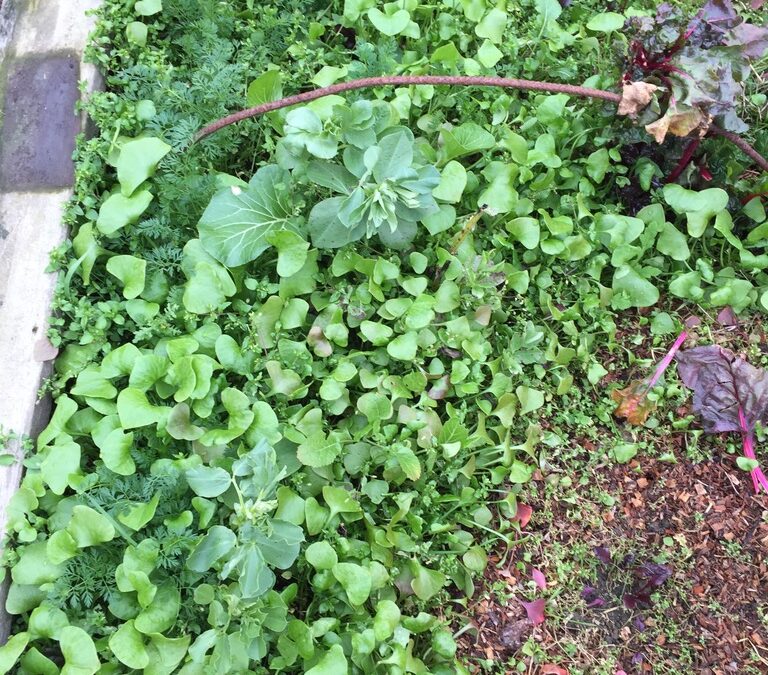It is always a good time for weeding, or as we like to call it thining. In our raised garden beds, we try to contain the bad weeds (twitch glass is the worst at the moment) and to reuse the beneficial plants, some of which are also edible.
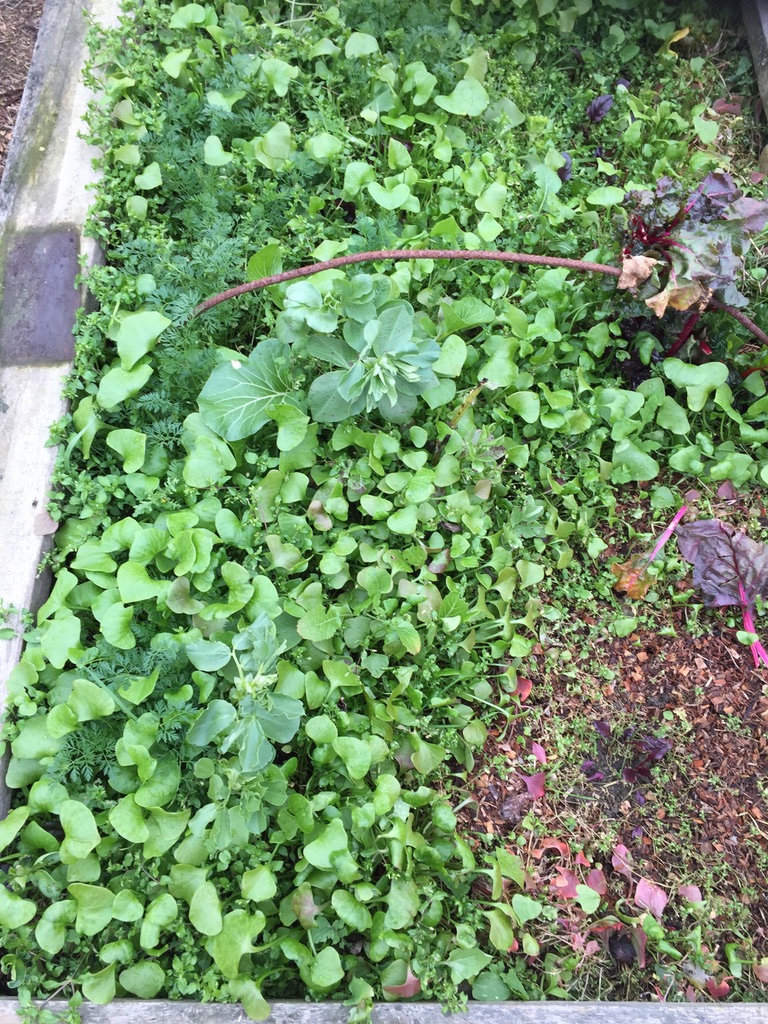
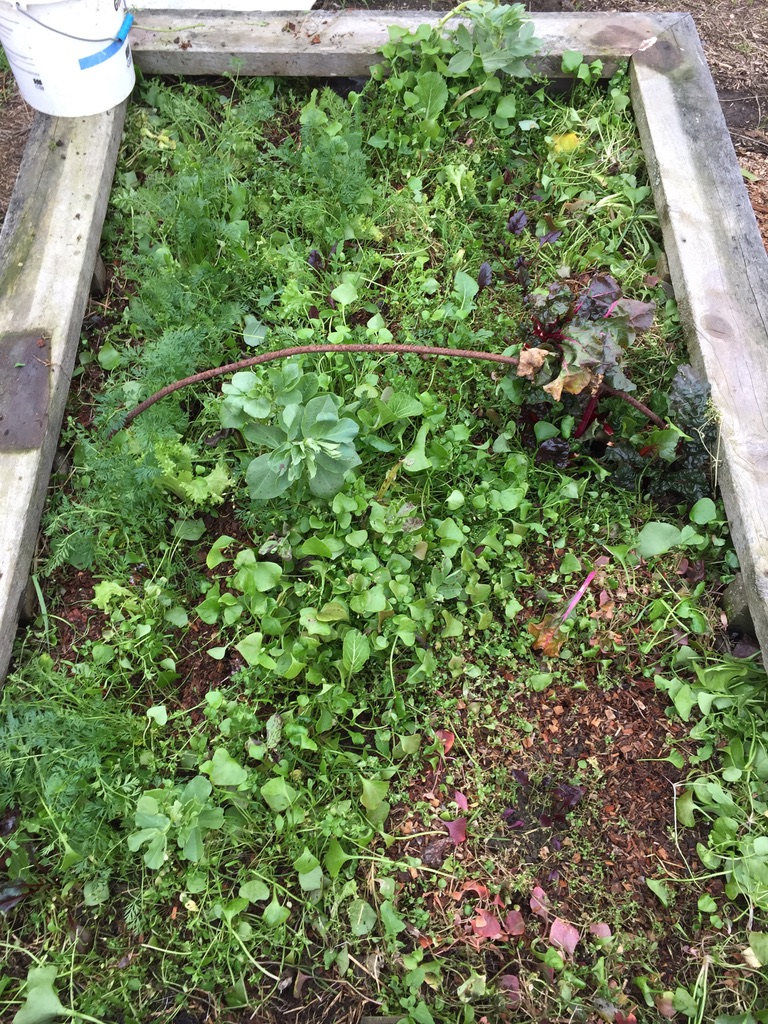
Above left: before weeding, we know that on the left of this raised bed are two rows of carrots of one age and another that is younger, there is also a row of beetroot and chard seedlings that we are using for our salads. The weeds in this raised bed are mainly miners lettuce and chickweed.
Above right: after weeding, we thinned out the miner’s lettuce and chickweed and some of this was used in today’s salads, some are chopped and dropped and the rest was layered into the compost heap. We leave some of the weeds in place growing as they help support the plants we’re growing (we believe in a canopy type environment) – this also helps with reducing frost damage to tender plants.
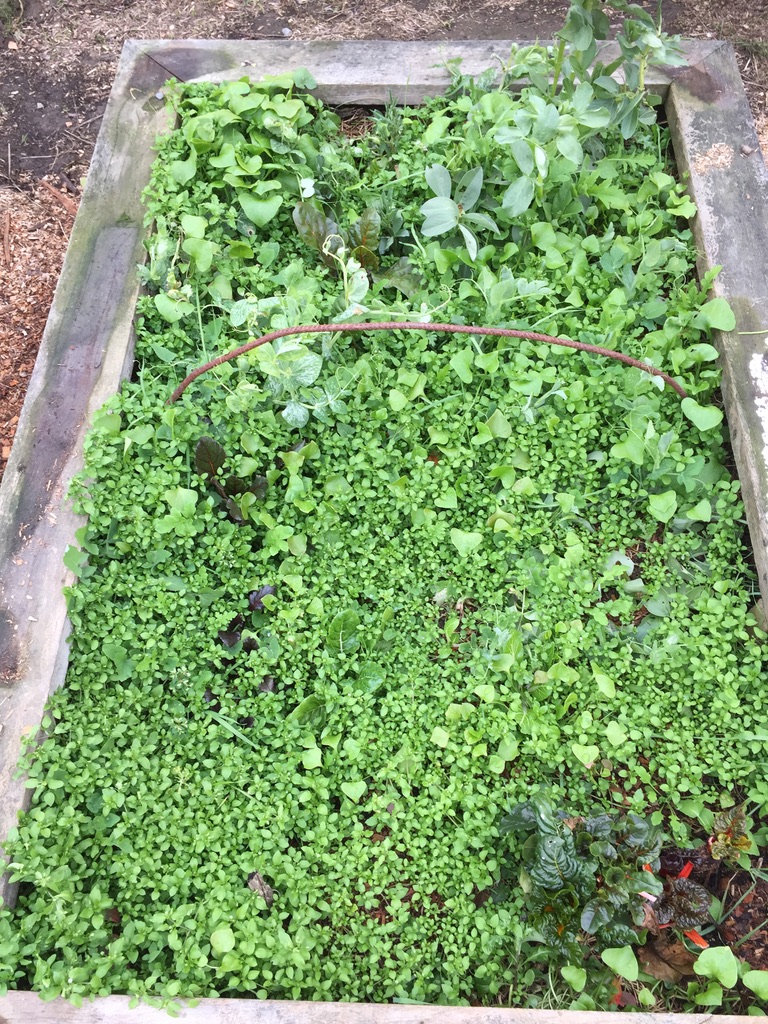
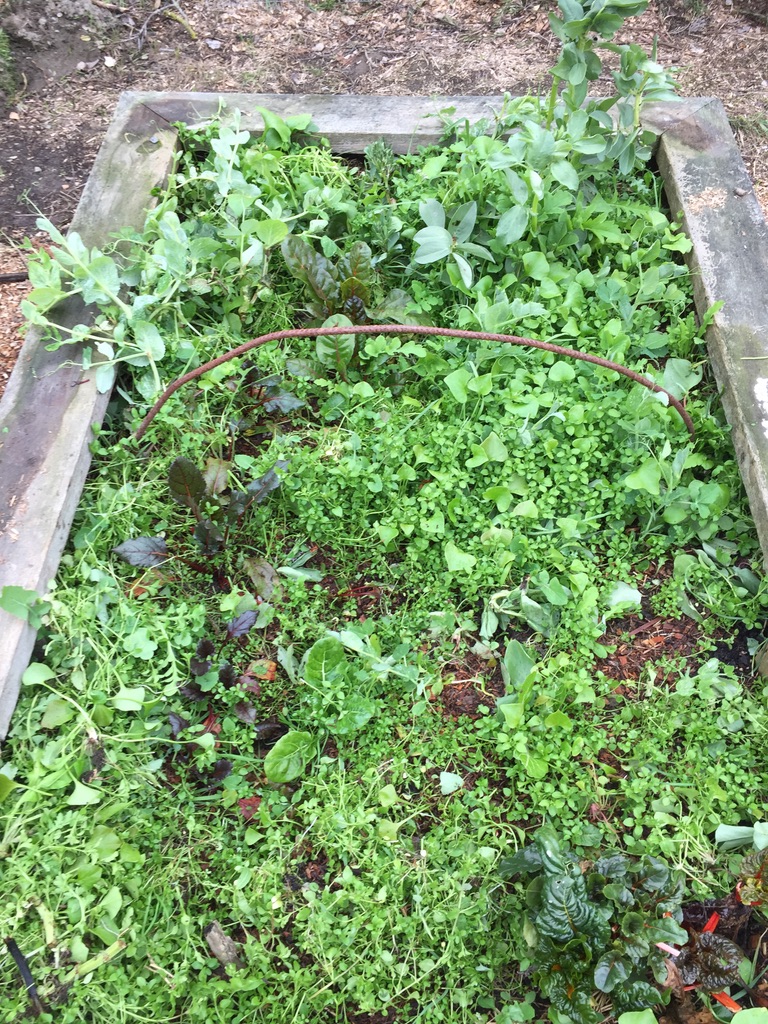
Above left: before weeding, we know that there are chard, beetroot, kohlrabi seedlings and pea plants growing in this bed. The weeds in this one are mainly chickweed, with some miner’s lettuce.
Above right: after weeding, most of the process for this was to chop and drop, we’ve noticed that the chickweed stores a lot of moisture, as does miner’s lettuce and as this breaks down the bedded plants use it.
What is chop and drop?
When a weed is plucked from the soil and ripped into bits/chopped and placed back on the surface to decompose in place.
